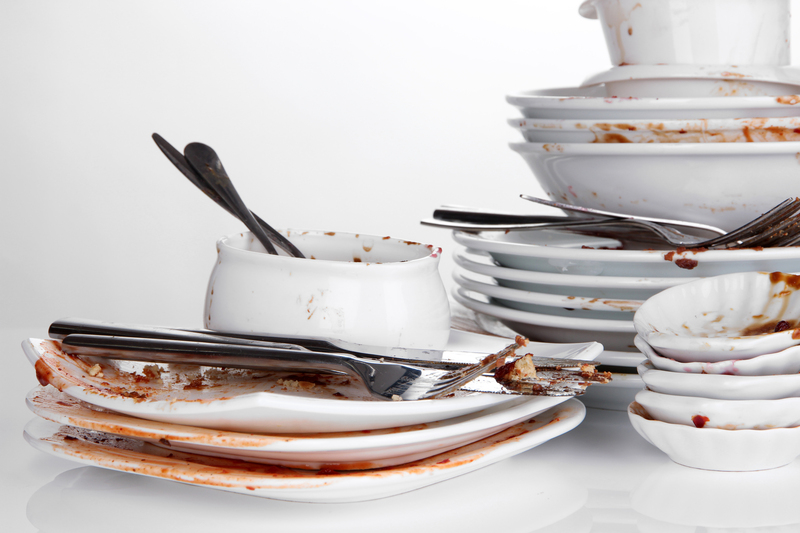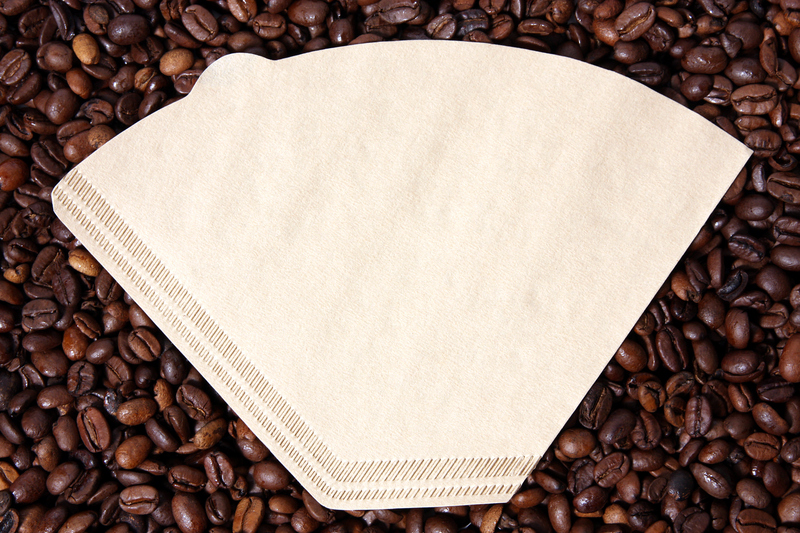Strategies for a Stovetop That's Free of Stubborn Burnt-On Grime
Posted on 26/09/2025
Strategies for a Stovetop That's Free of Stubborn Burnt-On Grime
A spotless kitchen often starts with a gleaming stovetop. However, maintaining a stovetop free of stubborn burnt-on grime can feel like a never-ending battle. Whether you're whipping up culinary masterpieces or scrambling a simple breakfast, spills and splatters are inevitable. Over time, these can build up, forming tough, unsightly stains that seem impossible to remove.
Fortunately, with the right techniques and regular care, you can reclaim your stovetop's shine and prevent the accumulation of hardened residue. This comprehensive guide covers effective strategies for a stovetop that's free of burnt-on grime--from daily habits to deep-cleaning methods, as well as preventive measures. Read on for expert-backed tips and a thorough approach to stovetop cleanliness.

Understanding Stovetop Surfaces: Why Cleaning Methods Matter
Before diving into specific cleaning strategies, it's essential to recognize that not all stovetops are created equal. Common types include:
- Gas stovetops with removable grates and burners
- Electric coil stovetops featuring raised coils
- Smooth ceramic or glass cooktops with flat, elegant surfaces
Each surface type requires a tailored cleaning approach. Using the wrong materials or cleaners can lead to scratches, discoloration, or even irreparable damage. Always reference your manufacturer's care instructions and test any new cleaning solution in a small, hidden area.
Common Causes of Persistent, Burnt-On Stovetop Grime
- Spilled food and liquids that aren't cleaned promptly
- High heat causing sugars and oils to carbonize
- Layered buildup from repeated cooking without thorough cleaning
These factors combine to create a sticky, blackened layer that simple wiping won't address. To maintain a grime-free stovetop, a proactive and thorough cleaning routine is crucial.
Daily Habits to Prevent Burnt-On Grime
Consistency is key in avoiding tough messes. Try these daily habits to keep your stovetop sparkling and reduce the accumulation of stubborn residue:
- Wipe up spills as soon as possible. Use a damp microfiber cloth or sponge to clean fresh splatters after each cooking session.
- Clean under burners and grates daily. Food and grease often hide underneath these components, becoming baked on over time.
- Keep a gentle cleaning spray nearby. A simple mix of water and vinegar can quickly break down minor spills before they set.
- Dry surfaces after cleaning. This helps prevent streaks and water spots, especially on glass and ceramic cooktops.
These quick steps take less than five minutes but can significantly minimize the need for heavy scrubbing down the road.
Weekly Deep-Cleaning Strategies: Conquering Stubborn Burnt-On Grime
Even with diligent daily cleaning, some spills inevitably harden and stick. That's where weekly deep-cleaning comes in. Let's explore expert methods that work for all stovetop types:
1. Baking Soda Paste Method
- Mix a thick paste of baking soda and water. For extra stubborn stains, add a bit of white vinegar.
- Spread generously over the burnt areas.
- Let sit for 10-15 minutes. The natural abrasion and chemical reaction will soften hardened grime.
- Scrub with a non-abrasive sponge or cloth. Avoid steel wool, especially on glass, to prevent scratching.
- Wipe clean with a damp cloth. Repeat as necessary for persistent grime.
2. Soaking Grates and Burners (For Gas Stovetops)
- Remove grates and burner caps.
- Soak in hot, soapy water for at least 30 minutes.
- Scrub using a gentle brush to remove residues.
- Rinse thoroughly and dry before reassembling.
Burnt-on food and grease often cling to these components. Regular soaking can make weekly cleaning much easier and your gas stove will operate more efficiently.
3. Cleaner for Ceramic and Glass Cooktops
For smooth surfaces, use a dedicated glass and ceramic stove top cleaner. These products:
- Break down tough, baked-on debris without scratching
- Restore shine for a like-new appearance
Always use a soft cloth or specially-designed razor scraper, held at a low angle, to gently lift off burnt deposits.
4. Vinegar and Steam Treatment
- Spray white vinegar over the affected area.
- Lay warm, damp towels on top for 15 minutes.
- The combined steam and acidity help dissolve tough grime for easy wiping.
5. Commercial Degreasers
For heavy-duty messes that just won't budge, use a kitchen-safe degreaser. Brands like Krud Kutter or Goo Gone Kitchen can tackle the greasiest, stickiest spills. Always follow product instructions and ventilate the area well.
Natural and Eco-Friendly Cleaning Solutions
Looking for green cleaning options? Homemade, non-toxic solutions can be just as effective. Some favorites include:
- Lemon Juice: Its acidity dissolves grease and leaves a fresh scent. Sprinkle a little salt for extra scrubbing power on metal surfaces.
- Baking Soda: This classic household staple is excellent for abrasion and odor control.
- White Vinegar: Helps cut through mineral deposits, especially on glass or ceramic cooktops.
*Tip: For a quick, eco-friendly stovetop cleaner, combine baking soda, lemon juice, and a splash of vinegar. Apply, let it fizz, and tackle the grime with a non-abrasive sponge.*
How to Address the Toughest Stovetop Stains
Despite regular maintenance, some stains seem almost immovable. Here's how to handle the worst offenders:
Burnt Sugar or Syrup Spills
- Use a soft plastic scraper or razor blade to carefully remove hardened sugar once the stovetop has cooled.
- Do not use metal tools on glass or ceramic surfaces.
- Apply a warm, damp towel to soften the spill before scraping if needed.
Charred Grease
- Apply a generous layer of degreaser or baking soda paste.
- Allow to penetrate for up to an hour for deep-seated residue.
- Use circular motions to buff away stains.
- Repeat as required; patience is key for old grime.
Discoloration on Stainless Steel
- Mix a paste of baking soda and water.
- Gently rub with the grain of the metal.
- Buff with a soft, dry microfiber cloth.
- Nourish the surface with a small amount of mineral oil for a streak-free finish.
Essential Tools for Effective Stovetop Cleaning
- Microfiber cloths: Lint-free, they're perfect for wiping and buffing.
- Non-scratch sponges: Safe for delicate surfaces, yet effective on grime.
- Plastic or silicone scrapers: Target burnt spots without scratching.
- Nylon dish brushes: Reach crevices and around burners.
- Razor blade scrapers (for glass cooktops): Remove stubborn buildup carefully.
Invest in quality tools and replace them when worn to avoid damaging your stovetop.
Smart Preventive Strategies for a Burnt-Free Stovetop
Beyond cleaning, establishing proactive habits will help your kitchen stay pristine. Consider these preventative measures:
- Use burner liners or drip pans to catch spills before they bake on. Just be sure they're manufacturer-approved for safety.
- Avoid overfilling pots and pans, which leads to bubbling over.
- Monitor simmering sauces and boiling liquids. Use timers and stay close to prevent accidents.
- Cook on lower heat when possible, reducing the chance for spills to burn.
- Keep a splatter screen handy to minimize oil and sauce splashes from frying or sauteing.

Frequently Asked Questions About Stovetop Cleaning
How often should I clean my stovetop?
For best results, wipe down daily and deep clean at least once a week. Address major spills right away to avoid burnt-on buildup.
What should I avoid using on my stovetop?
Avoid steel wool, abrasive powders, and harsh chemicals--they can scratch glass, ceramic, and stainless steel. Always use soft cloths and non-abrasive cleaners unless specified by your appliance manufacturer.
Are there eco-friendly alternatives to commercial stovetop cleaners?
Yes! Baking soda, vinegar, and lemon juice all work wonders and are safe for most surfaces when used correctly.
Can I use the same cleaning methods for my oven?
Some methods overlap, especially when dealing with burnt food, but check your oven's manual. Oven surfaces sometimes require special cleaners or self-cleaning cycles.
How do I safely use a razor scraper on a glass stovetop?
Hold the scraper flat at a 45-degree angle, gently working under residue. Never use it while the cooktop is hot, and always follow manufacturer guidance.
Conclusion: Achieving and Maintaining a Spotless, Grime-Free Stovetop
While a pristine stovetop might seem like an impossible dream, the reality is that with the right routine and practical cleaning strategies, anyone can enjoy a kitchen that looks and feels inviting. The key is combining daily maintenance with regular deep cleaning, using gentle yet effective products tailored for your specific appliance.
Switching between baking soda pastes, vinegar soaks, dedicated stovetop cleaners, and eco-friendly alternatives provides a full arsenal for tackling every type of burnt-on mess. And by adopting a few preventive habits, you'll drastically cut down on the time and energy spent scrubbing away old grime.
Remember, the sooner you address spills and stains, the easier they are to eliminate. Keep your favorite tools and supplies close at hand, and let these comprehensive stovetop grime-removal strategies transform your kitchen cleaning routine. Your stovetop can remain sparkling, hygienic, and ready for every meal--free from tough, burnt-on residue.




